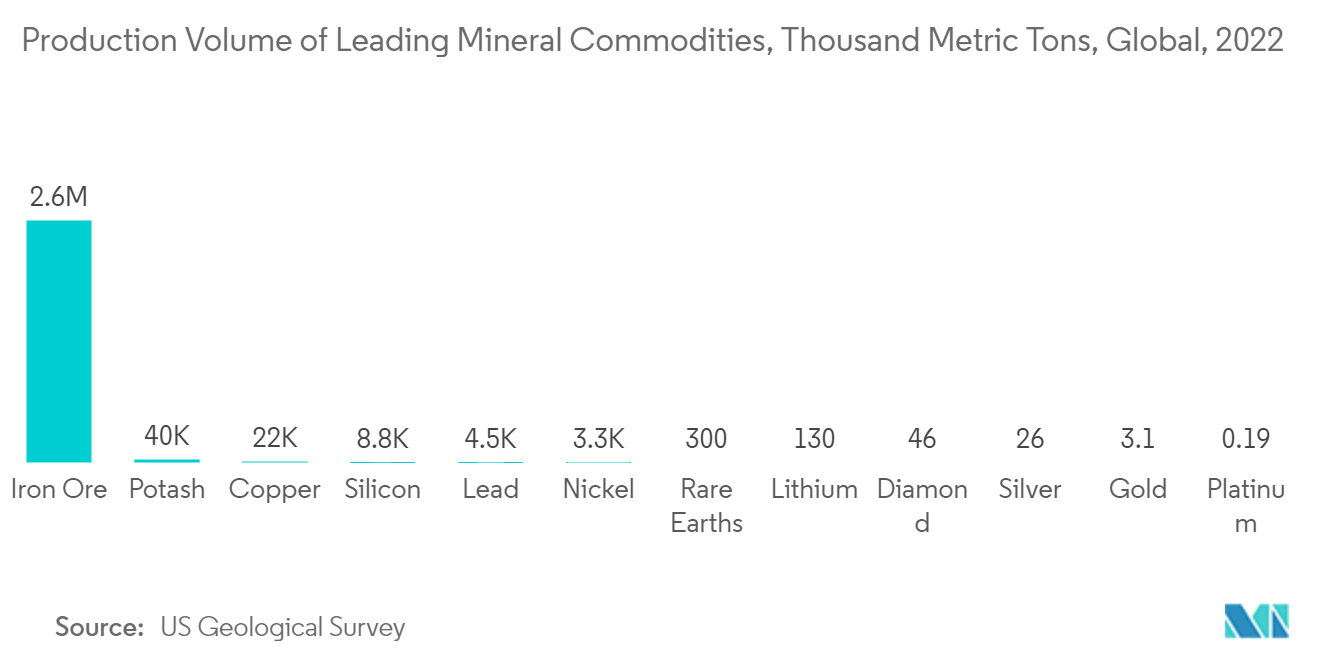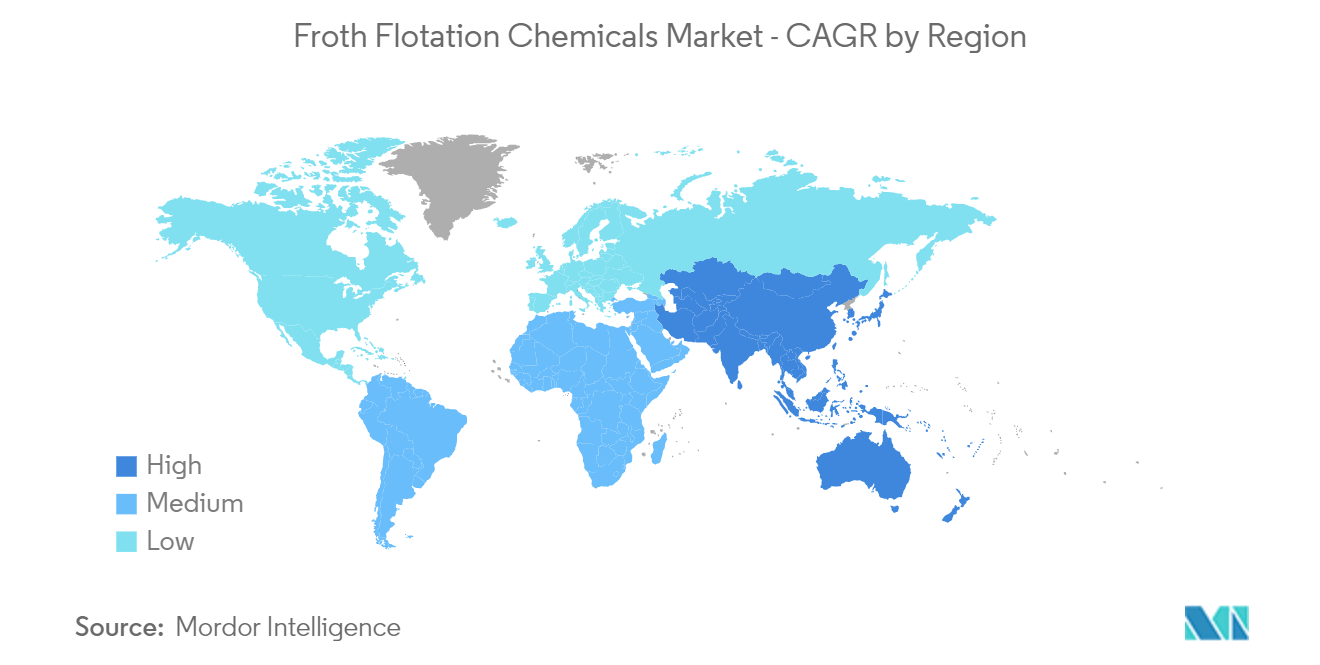Market Trends of Froth Flotation Chemicals Industry
Rising Demand from the Mining Industry
- The mining industry is the largest end-user of froth flotation chemicals. The chemicals are used in mining activities, according to the nature of the mine explored in the area.
- Froth flotation chemicals are primarily employed to extract minerals by allowing them to attach to air bubbles. The specific separation of minerals from the slurry is done using the difference in hydrophobic properties of the components.
- Flotation of various minerals, such as feldspar, quartz, calcite, potash, barite, phosphate, fluorspar, etc., is carried out using the chemicals. Direct and reverse flotation are the two methods, depending on the attachment manner of the mineral.
- Froth flotation chemicals play a major role in the mining and processing of mineral ores. With increased consumption of base metals (such as iron, steel, aluminum, etc.) and precious metals (such as silver, gold, and platinum), mining activities for the above metals surged globally.
- As per the US Census Bureau, revenue in mining and quarrying amounted to USD 14.39 billion in 2022, compared to USD 13.68 billion in the previous year. The revenue from this sector is projected to amount to USD 15.25 billion in 2023.
- According to USGS, the United States mines produced approximately USD 98.2 billion in nonfuel mineral commodities in 2022.
- Mining and metallurgy are key industries in the country. Canada supplies over 60 metals and minerals to different countries worldwide. The mining industry invests in innovation and new technologies, rapidly reshaping the sector. The mining industry also witnessed consolidations, which led to speculations regarding the growth prospects for the industry in the coming years.
- All the reasons above are expected to boost the demand for the market studied, in the mining industry, over the forecast period.

Asia-Pacific to Dominate the Demand
- Asia-Pacific is expected to dominate the market, owing to the rising demand from China and India.
- Due to the country's large mining operations, China is the largest consumer of froth flotation chemicals. The country is one of the largest producers and consumers of mining products.
- The mining industry drives the froth floatation chemicals market in India. Due to large metal and mineral reserves, mining is a major economic activity in the country. The distribution of minerals varies from region to region, but the country roughly contains coal, iron ore, manganese, bauxite, and other ferrous and non-ferrous minerals.
- Rise in infrastructure development, automotive development, and power and cement industries are driving the growth for the metal and mining sector. The country's coal ministry allowed private companies to engage in mining activities for the first time in four decades, and 100% FDI was allowed in the mining sector.
- The mining industry in China is one of the largest in the world. It is the leading producer of over 20 metals, including gold, graphite, iron, aluminum, cement, coal, lead, magnesium, rare earth, etc. Revenue from mining and quarrying in China is projected to reach USD 0.95 trillion in 2023, with an annual growth rate of 4.09%. The country's total number of mining enterprises amounted to more than 10,392.
- South Korea achieved more than a 92% penetration rate of sewage through the first National Sewage Comprehensive Plan (2007 - 2015) through the continuous expansion of sewage treatment facilities. Most sewage treatment plants contain anaerobic digesters, so the organic matter content is relatively low, and the concentration range is about 40-70%. The treated sewage is reused mainly in the STPs as process water (53%), and the rest is used for river flow maintenance (34%), industries (3%), agriculture (3%), and other purposes (7%). The main uses of the process water were washing water (41%), cooling water (10%), cleaning water (6%), dilution water (3%), and others (40%).
- The mining industry in India is one of the eight core industries of the economy. It provides basic raw materials to many important industries. According to MOSPI (National Statistical Office), the annual growth rate of mining production in India was 18.2% in 2022.
- The factors above, coupled with huge government support, are contributing to the recent increasing demand for froth flotation chemicals in the Asia-Pacific region.


